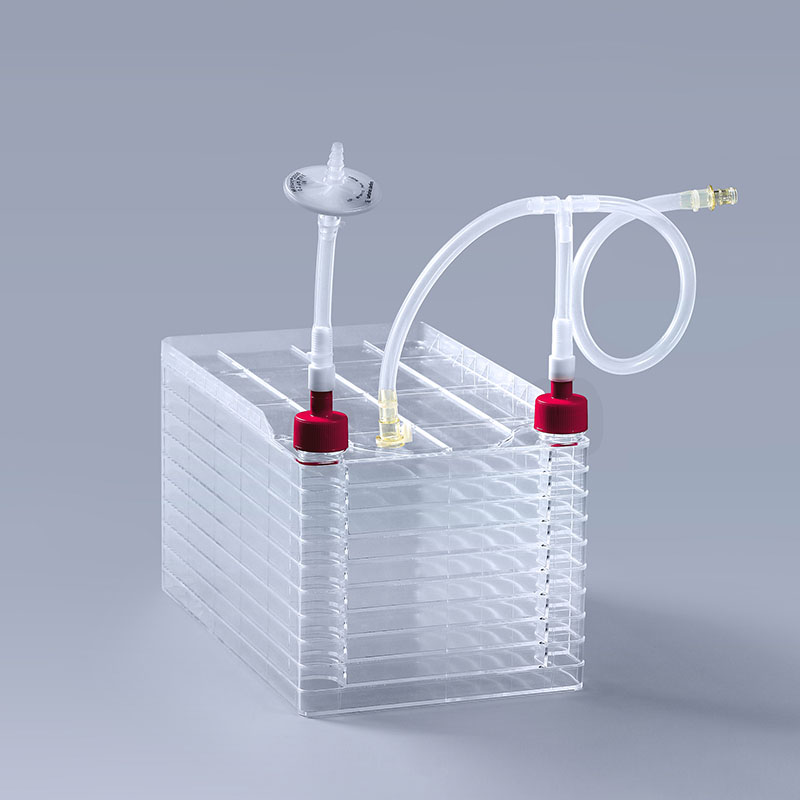Cell factories are multi-layered cell culture containers available in various sizes such as 1-layer, 2-layer, 5-layer, 10-layer, and 40-layer, primarily used for adherent cell culture. The following outlines the standard procedure for culturing cells in a cell factory:
Inspection: Check the cell factory for cleanliness, damage, and any suspended particles.
Adding Cell Suspension: Pour the required amount of cell suspension into the cell factory. It is recommended to add 200 mL per layer.
Balancing: After adding the cell suspension, keep the cell factory upright with the filling port facing away. Balance it for a while to ensure the liquid is evenly distributed across all layers.

Distributing Medium: Rotate the cell factory 90 degrees counterclockwise so that the filling port faces upwards. Let it sit for a while; the culture medium will automatically distribute evenly to each layer.
Laying Flat: Hold the filling port side with both hands and slowly lay the cell factory flat in a horizontal position.
Mixing the Suspension: Use the cross-hatch method to mix the suspension, then gently transfer the cell factory to the incubator for culturing.
Harvesting: After the culture period, directly pour the culture medium into a collection container.
Washing: Rinse the cell factory with PBS once, then add cell dissociation solution and repeat steps 2-4, allowing it to sit for 2 minutes.
Stopping Digestion: Add an appropriate amount of digestion stop solution and mix well, then pour the cell suspension into a collection container.
While the basic procedure for culturing cells in a cell factory is consistent, specific steps may vary depending on the cell type, experimental goals, and other factors. It is crucial to follow aseptic techniques to avoid contamination and ensure optimal cell viability and experimental outcomes.
The FAI climbed 5.9 percent year-on-year in the first 11 months of 2018, quickening from the 5.7-percent growth in Jan-Oct, the National Bureau of Statistics (NBS) said Friday in an online statement.
The key indicator of investment, dubbed a major growth driver, hit the bottom in August and has since started to rebound steadily.
In the face of emerging economic challenges home and abroad, China has stepped up efforts to stabilize investment, in particular rolling out measures to motivate private investors and channel funds into infrastructure.
Friday's data showed private investment, accounting for more than 60 percent of the total FAI, expanded by a brisk 8.7 percent.
NBS spokesperson Mao Shengyong said funds into weak economic links registered rapid increases as investment in environmental protection and agriculture jumped 42 percent and 12.5 percent respectively, much faster than the average.
In breakdown, investment in high-tech and equipment manufacturing remained vigorous with 16.1-percent and 11.6-percent increases respectively in the first 11 months. Infrastructure investment gained 3.7 percent, staying flat. Investment in property development rose 9.7 percent, also unchanged.
 English
English


















































